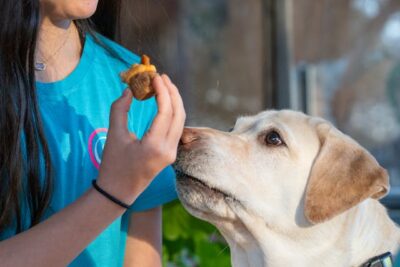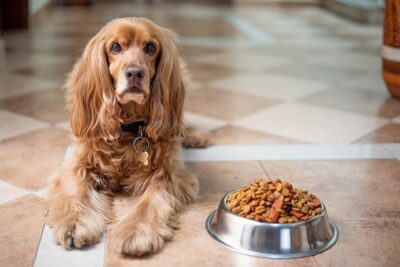Just like humans, our canine companions are susceptible to accidents and injuries that require extra TLC for recovery. While visiting the vet is imperative, supportive care at home makes a big difference in the healing process. With empathy, patience, and these simple tips, you can effectively nurse your furry friend back to health. From wound treatment to exercise modification, proper aftercare minimizes pain and promotes healing. Let’s explore a few practical strategies for caring for an injured dog with kindness and care.
Control Bleeding And Clean The Wound
For any cuts or abrasions sustained, apply gentle pressure to the affected area until all bleeding ceases. Once the flow has fully stopped, carefully cleanse the wound with a mild antiseptic solution. Inspect for any debris or dirt trapped within the injury by rinsing with a sterile saline wash. This allows for the removal of surface-level bacteria and disinfection before allowing natural healing or protective bandaging. By providing this prompt preliminary first aid, you can best minimize risks of subsequent infection developing before your veterinarian evaluates the case fully.
Provide Comfort And Monitor Vitals
Make your pup relaxed in their usual safe space with cozy beds, toys, and minimal activity if mobility allows. Watch for concerning symptoms like lethargy, loss of appetite, fever, or rapid breathing that require vet attention as healing proceeds. Check wounds regularly for discharge and swelling too.
Apply Medication As Directed
Topical or oral antibiotics, pain relievers, and creams or sprays that are prescribed target specific issues such as infections, swelling, or distress. It is important to carefully administer medications as instructed by your veterinarian rather than based on personal preferences. Be sure to consult your vet if you notice any changes in dosage needs, side effects, or lack of improvement. Your veterinarian’s guidance is important for safely and effectively treating your pet’s condition.
Restrict Activity And Exercise Lightly
The precise nature and positioning of the injury must guide decisions around mobility and activity level in the initial recovery phase. Complete rest or strictly limited movement helps ensure the wound faces no undue disruption or risk of exacerbation. Gentle leash-led walks allow for essential outdoor breaks without placing undue strain or tension on the recovery area. As discomfort levels gradually diminish over time with treatment and healing, normal routines can prudently resume. However, this process warrants careful oversight under your veterinarian’s recommendations.
Feed Nutritious Meals
Sustaining a wholesome, nutrient-dense diet plays a vital supportive role in the body’s innate healing mechanisms after sustaining any common small dog injuries. A recovery regimen fortified with proteins, vitamins, and minerals from both wet and dry foods nourishes both the inside and out. For dogs with more delicate appetites, coaxing enjoyment of softer menu items through gentle hand-feeding can help until usual hunger fully reawakens. Consistent hydration also proves important, so do encourage frequent water intake. Making sure the body receives these necessary building blocks aids in the natural inner work of repairing and renewing.
Provide Comfort And Entertainment
Beyond medical care, showing affection through gentle cuddles and pets relieves stress. Favorite toys, enrichment items, and interactive chews entertain within activity limitations. Mental engagement speeds physical recovery when feeling secure and content at home.
Follow up Carefully With Your Vet
Schedule re-checks to monitor healing trajectory. Receive updated treatment plans if licking or infection persists. Physical therapy aids mobility or joint injuries. Timely wound rechecks upon removal of staples or stitches ensure proper closure. Conscientious follow-through maximizes positive outcomes.
Be Patient Through The Healing Process
It takes time for the body to fully mend, so remain supportive and keep your furry friend as comfortable as possible indoors or with limited freedom until given clearance for total exertion again. With rest, TLC, and responsible care, your loving pet’s resilience and recovery will shine through.
Related Post:







